The Temple of Augustus and Livia is found in the town of Vienne in the département of Isère. It stood on the west side of a Forum decorated with majestic porticoes, commemorative monuments and imperial statues. Converted into a Christian church at the beginning of the middle ages, it hosted the Jacobin Club during the Revolution before becoming a court house, a museum and finally a library at the beginning of the 19th century. These successive and varied uses were the drivers of its remarkable preservation. In 1850, Prosper Mérimée, protector of French heritage in his capacity as Inspector General of Historic Monuments, commissioned its restoration to its original condition by attempting to reverse the changes undergone over two millennia.
The objective of this project was to produce a 3D textured model of the object which would meet the needs of the architects, archaeologists and conservationists, for whom the conservation of heritage objects is a significant challenge and who would all be major users of the results.
We decided to use laser scanning to meet the requirement. This revolutionary new tool enabled us to provide a high density survey in record time.
We carried out research into possible improvements in the 3D textured model:
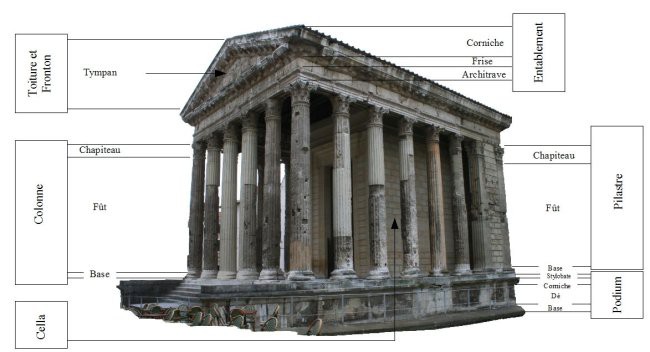
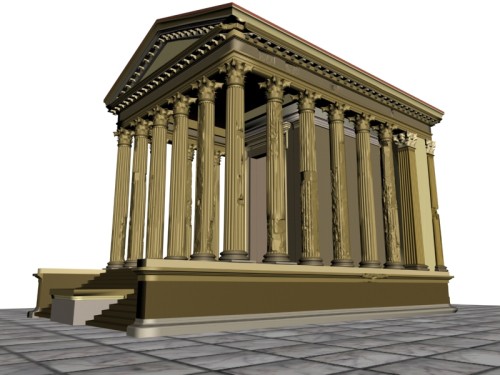 |
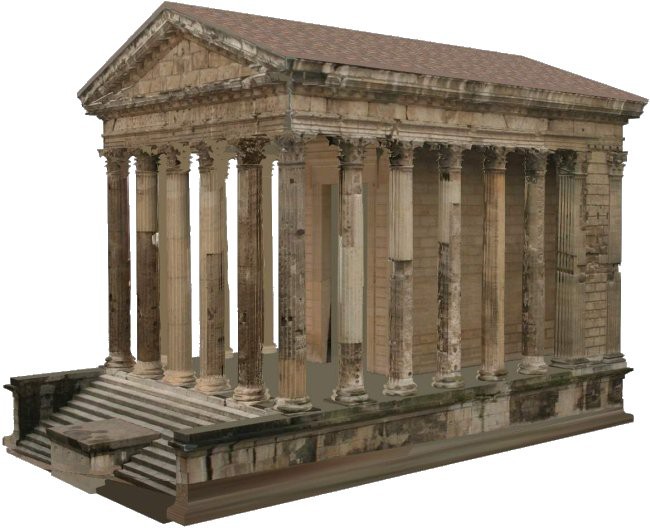 |
The transition between “as-built” and “as-is” models is achieved by means of Boolean operations. The as-built model is “hollowed out” to the as-is state, thus representing the damage since the original construction.
Thanks to this stage of the process, we provide a model which is faithful to reality and is useful especially in order to visualise the damaged areas where renovation is needed. In addition, this level of detail is sometimes essential for texturing the model using photographs taken on site. Oriented photographs are projected onto the model such that the result is perfectly faithful to the present-day reality.
This project on the Temple of Augustus and Livia also provided the opportunity to assess the accuracy of the resulting 3D model. Two methods were adopted:
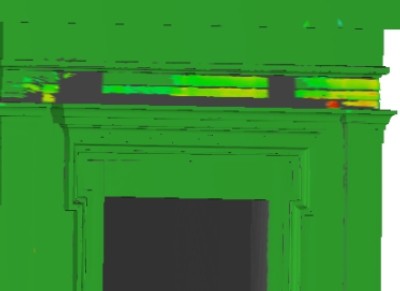 |
 |
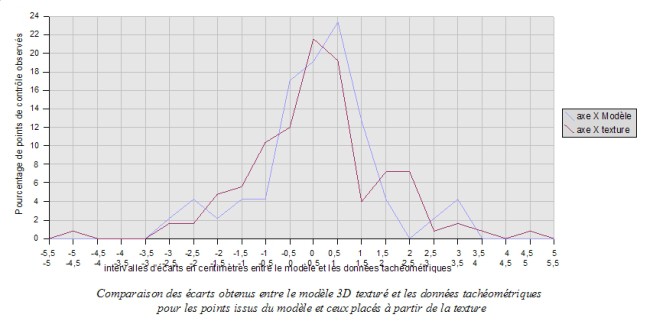 |
The study of the conventions of architecture and the breakdown of the object into simple shapes enables a correct representation of the object from an architectural point of view. It provides the opportunity to associate each component with a corresponding method of modelling and to emphasise the similarities between different sub-objects. From these observations flows a refined survey procedure which results in time savings at the modelling stage. The transition between the “as-built” and “as-is” models by means of Boolean operations confines the meshing process purely to the degraded areas, thus keeping file sizes to a minimum. Use of this method guarantees an accuracy of 2 to 3 cm over the whole model, which can be checked throughout the modelling process by means of 3DReshaper’s Compare/Inspect tool.